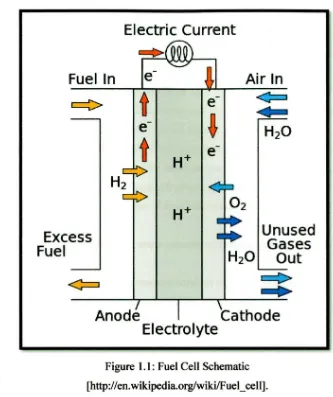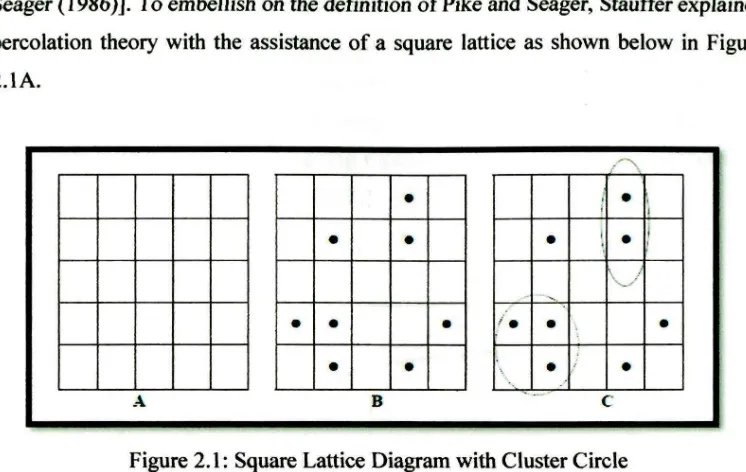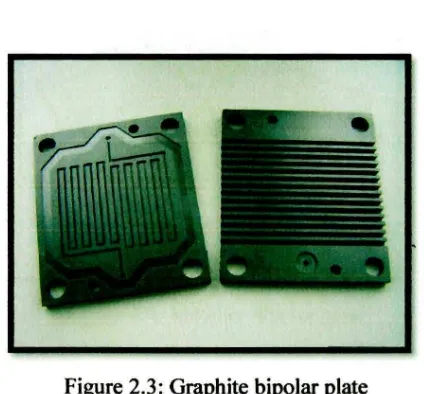SUPERVISOR DECLARATION
" I declare that I have read this thesis and in my opinion this report is sufficient in terms
of scope and quality for the award of the degree of Bachelor of Mechanical Engineering
(Structure
&
Materials)"Signature
Supervisor
Date
:
...
セ@
... .
: DR. MOHD ZULKEFLI BIN SELAMA T
:30MAY2013
DR. MOHD ZULKEFLI BIN SELAMAT
EFFECT OF ST ANUM ON THE PROPERTIES OF GRAPHITE
-ST ANUM COMPOSITE FOR BIPOLAR PLATE
MUHAMMAD YUSRI BIN MD. YUSUF
This report is submitted to Faculty of Mechanical Engineering as a
requirements to get award of
Degree of Mechanical Engineering (Structure
&Material)
Faculty of Mechanical Engineering
Universiti Teknikal Malaysia Melaka
ii
DECLARATION
"I hereby declare that the work in this report is my own except for summaries and quotations which have been duly acknowledged."
:
...
セ@
... .
:
セ@
YUSRI BIN MD. YUSUF:
NセNセ@
....
イA|セZゥN@
..
Z_N_N|セ@
....
Ill
ACKNOWLEDGEMENTS
This journey would not have been completed if not for my advisor, Dr Mohd Zulkefli bin Selamat. To him, I owe my gratitude and my deepest appreciation for nurturing this educational experience. Because of their sincere commitment to my educational experiences as well as my personal well being I can truly consider myself a better person and student. Also not to be forgotten Mr Mohd Shakir bin Ahmad (post-graduate) who helps a lot during my lab session.
I am also really grateful as I have completed this Projek Sarjana Muda 2 with the help and support, encouragement and inspirations by various parties by directly or indirectly. All the knowledge and information that they give are really helpful.
Additionally, I need to thank several individuals whose help was imperative to the completion of my research project; Dr. Mohd Fadzli Bin Abdollah and Mr. Omar bin Bapokutty as my panels.
iv
ABSTRACT
Bipolar plate is an important key component in fuel cell on the basis of its manifold function. Based on these phenomena's there are a lot of effort is going on worldwide to make conductive composites which more high conductive. This research is study the electrical and mechanical properties of GraphitelStannum (GISn) composites as prospective conductive composite to replace the traditional G as bipolar plate in proton-exchange membrane fuel cells (PEMFC). The main problems with the traditional bipolar plate materials such as metal and graphite materials are corrode, too brittle and low in electricity conductivity; but for G-Sn composite have potential to eliminate the above problems. Meanwhile the advantages of Sn as compare other materials are good conductor of electricity, high-strength materials and have the low melting point. In this research, focus is given to Sn and its effects on the properties
on GISt composite. The raw materials used to produce thus composite is G as a filler
and Sn as a binder or resin. The weight percentage of GISn has been be fixed at 80120, 70130 and 60140. Before the composite shaped by using hot press machine, the G and Sn has be mixed used ball mill. The effects of Sn on the electrical conductivity and mechanical properties of GISn composite need to be determined as well as the critical loading of Sn in GISn composite before can be used as GISn composite for bipolar plate. Based on results, the properties of composite such as electrical conductivity and density, the weight percentage of 20 wt% of Sn gives maximum value of electrical conductivity (719.05 Siem). This value was achieved DOE requirement (> 100 Siem). There are decreasing values of electrieal conductivity for higher Sn content. It also interesting to note that with increasing the Sn content, density properties in decreased and satisfied the OOE target which is - 1.9 gem ·3•
v
ABSTRAK
Plat dwikutub merupakan satu daripada komponen penting/utama sel bahan api berdasarkan fungsi pancarongga. Dalam fenomena ini banyak usaha yang sedang dilakukan di seluruh dunia untuk membuat komposit berkonduktif tinggi dengan pengalir elektrik yang baik. Penyelidikan terhadap potensi komposit Grafit I Sn (GI
vi
TABLE OF CONTENT
DECLARATION ii
ACKNOWLEDGEMENT iii
ABSTRACT iv
ABSTRAK v
CONTENT vi
LIST OF FIGURE x
LIST OFT ABLE xii
LIST OF SYMBOLS AND ABBREVIATION xiii
CHAPTER 1: INTRODUCTION
I. I Fuel Cell
1.2 Polymer Electronic Membrane Fuel Cell (PEMFC) 2
1.3 Bipolar Plate 3
•
l.4 Problem Statement 5
1.5 Objective 6
vii
CHAPTER 2: LITERATURE REVIEW
2.1
Conductive Polymer Composites 72.1. J
Percolation theory 82.2.
Bipolar Plate 102.2.l
Graphite Bipolar Plates11
2.2.2
Metallic Bipolar PlatesJ2
2.2.2
Composite Bipolar Plates13
2.3
Material13
2.3.1
Pure Graphite14
2.3.2
Graphite Composite15
2.3.3
Stannum I Tin16
2.3.4
Physical properties17
2.3.5
Chemical propertiesJ8
2.3.6
Lithium-ion batteriesJ9
2.3.7
Tin Lithium Alloys 192.4
Fabrication Method20
2.4.1
Compression Molding20
2.5
Testing2J
2.5.l
Electrical Conductivity21
2.5.2
Bulk Density22
viii
CHAPTER3:METHODOLOGY
253.1 Experimental Overview 25
3.2 Flow Chart 25
3.3
Raw Materials27
3.4 Method of Fabrication 28
3.4.1 Sample Preparation
28
3.4.2 Equipment 29
3.4.2.1 Ball Mill Machine (Pre-Mixing)
29
3.4.2.2 Hot Press Machine 30
3.5 Method of Testing and Characterization 31
3.5.1 Electrical Conductivity 31
3.5.2 Density Test 32
3.5.3 Microstructure Test 33
CHAPTER 4: RESULT AND DISCUSSION
4.1 Optimization by Taguchi Method 34
4.2 Sample physical characteristic 37
4.3 Data analysis 38
4.3.1 Conductivity analysis 38
4.3.2 Density test 40
4.3.3 Microstructure test 41
CHAPTER 5: CONCLUSION AND RECOMMENDATION
5.1 Conclusion
5 .2 Recommendation
REFERENCES
BIBLIOGRAPHY
APPENDIX
ix
44
45
46
50
x
LIST OF FIGURE
Figure Title Page
1.1
Fuel Cell Schematic3
2.1
Square Lattice Diagram with Cluster Circle8
2.2
Dependence of Electrical Conductivity on Filler Volume Fraction9
2.3
Graphite bipolar plate 102.4
Metallic bipolar plate11
2.5
Composite bipolar plate13
2.6
Pure graphite14
2.7
Powder of graphite.16
2.8
Powder of stannum17
2.9
Structure of lithium-ion battery19
2.10
Compression molding process21
2.11
Four probe testing machine22
2.12
Bulk Density Tester23
2.13
Scleroscope test.24
xi
3.3 Sample preparation 28
3.4 Ball mill machine 29
3.5 Process of Ball mill 29
3.6 Hot press machine 30
3.7 During compression process 30
3.8 Jandel Multi Height Four Point Probe 32
3.9 Specimen position 32
3.10 Confocal Microstructure 33
4.1 Optimize value of each variable by Taguchi Method 35
4.2 The physical characteristics of each specimen 34
4.3 Sample of each composition 35
4.4 Graph of conductivity vs. percentage of Sn Content (wt%) 39
4.5 Graph of density vs. percentage of Sn content. 40
xii
LIST OFT ABLE
Figure Title Page
3.1
Bipolar Plate Materials Composition27
4.1
The combination of each variable.35
4.2
Conductivity result of each combination36
4.3
Optimize value of each variable37
4.4
Data of electrical conductivity for each specimen38
4.5
Data of density test for each specimen40
4.6
Density material of G and Sn41
4.7
Symbol of Sn and G42
Symbols US-DOE MEA ASTM PEMFC CPCs GDL g/cm3 G Sn
oc
MPa µA Wt.% E SiemLIST OF SYMBOLS AND ABBREVIATION
Title
United State Department of Energy
Membrane Electrode Assembly
American Society for Testing and Materials
Polymer Electron Membrane Fuel Cells
Conductive Polymer Composites
Gas Diffusion Layer
1
CHAPTER!
INTRODUCTION
1.1 Fuel Cell
Fuel cell is a device that converts the chemical energy from a fuel into electricity through a chemical reaction with oxygen or another oxidizing agent. Hydrogen is the most common fuel, but hydrocarbons such as natural gas and alcohols like methanol are sometimes used. Fuel cells are different from batteries in that they require a constant source of fuel and oxygen to run, but they can produce electricity continually for as long as these inputs are supplied. An electrolytic process has to take place inside a cell in which there is an open source fuel which is hydrogen and an oxidant or can be called oxygen [Larminie and Dicks (2003)].
2
The result obtained by combining hydrogen and oxygen is water. As a result of this process, electricity is formed. There are mainly three segments.
i. Anode ii. Cathode iii. Electrolyte
The type of electrolyte used is what defines the type of fuel cell used. Whatever may be the type of fuel cell, their basic operation is always the same. With the combination of the three segments, two main chemical reactions take place. A catalyst will be present at the anode. This anode catalyst, mostly platinum powder, is used to oxidize the hydrogen fuel. Thus the hydrogen gas turns into ions and electrons. Out of these, the ions make way through the electrolyte to the cathode. As soon as they reach the cathode, they combine with the cathode and then react with the oxidant to produce water. The electrons pass through a wire producing the electricity. Nickel is mostly used as the cathode catalyst.[Thomas and Zalbowitz (2008)]
1.2 Polymer Electronic Membrane Fuel Cell
Fuel In
Excess
Fuel
Electric Current
Air In
Unused
Gases
H20
Out
Anode
Cathode
Electrolyte
Figure 1.1: Fuel Cell Schematic [http:! /en. wikipedia.org/wiki/Fuel _cell].
3
The fuel cell consists of two bipolar plates, a membrane electrode assembly (MEA), and two seals. The MEA constitutes a membrane, two dispersed catalysts layers, and two gas diffusion layers. Figure shows the conversion of chemical energy to electrical energy using hydrogen as the fuel and oxygen as the oxidant. The anode supplies hydrogen and the cathode supplies oxygen to the gas diffusion layer (GDL). The GDL allows direct and uniform access of the fuel and oxidant to the catalysts layers, which increases the rate of each half reaction. [Borup and Vanderborgh
[image:17.514.100.433.71.468.2]4
1.3 Bipolar Plate
Bipolar plates constitute the backbone of a hydrogen fuel cell power stack, conduct current between cells, facilitate water and thermal management through the cell, and provide conduits for reactant gases namely hydrogen and oxygen. In the polymer electrolyte membrane (PEM) hydrogen fuel cell design, bipolar plates are fabricated in mass production and they must be made of materials with excellent manufacturability and suitable for cost-effective high volume automated production systems. Bipolar plates have a number of functions within the fuel cell stack;
i. The reaction gases and water exhaust whereby separating gases between cells.
ii. Providing a conductive medium between the anode and cathode. iii. Providing a flow field channel for the reaction gases.
iv. A solid structure for the stack. v. Transferring heat out of the cell.
Based on United State Department of Energy (US-DOE), the requirements for bipolar plates are as follows,
i. Good electrical conductivity(> 100 S cm-1 bulk conductivity). ii. Low hydrogen permeability ( <2x 10-6 cm3 ( cm2s
r
1 ).iii. Good chemical stability and corrosion resistant (<lµA cm-2)
iv. Good flexural strength (>25 MPa). v. High tensile strength (>41 MPa).
vi. High thermal conductivity (>10 W (mKr1).
vii. Low thermal expansion. viii. Efficient process ability.
5
functions within the PEMFC. It disseminates the oxidant (oxygen) and fuel (hydrogen) into the fuel cell. The distribution of the fuel and oxygen throughout the active area are by flow fields in the bipolar plate. The flow fields on the bipolar plate have various patterns which facilitate effective and efficient water and impurity movement so not to compromise fuel cell activity [Kumar and Reddy (2003)]. The bipolar plate also separates the cells from one another, extracts heat from the active area, conducts current from cell to cell, and prevents leakages of gases and coolant [E. Middelman (2003)].
The design criteria of the bipolar plate for the PEMFC takes into account the thickness to minimize stack volume and electrical resistance. The bipolar plate must be gas impermeable to eliminate the mixing of the oxidant and the fuel. The material should be corrosion resistant due to the acidic environment present in the fuel cell. It should also be thermally conductive to remove heat from the fuel cell and electrically conductive to minimize ohmic losses [Nunnery (1998) ]. The bipolar plate should also provide mechanical strength and rigidity to support the electrolyte membrane and withstand the clamping forces [Borup and Vanderborgh (1995)]. In order to achieve the design criteria and function and cost targets of the bipolar plate, researchers tend to focus on the material selection of the bipolar plate.
1.4 Problem Statement
6
1.5 Objective
The main objectives of this research are to study the effect of the stannum on the properties of graphite/stannum composite for bipolar plates to be used in fuel cell. In this research is use as a main filler and stannum is used as the binder. The main objectives of the research are;
i. To study the effects of stannum on properties of graphite composite. ii. To determine the critical loading of Stannum, in graphite composite.
1.6 Scope
7
CHAPTER2
LITERATURE REVIEW
2.1 Conductive Polymer Composites
Conductive polymer composites (CPCs) are obtained by combining an
insulating polymer with electrically conductive fillers. The usefulness of these
materials as fuel cell bipolar plates requires an understanding of factors which
control the electrical conductivity of the composite. In addition to identifying the
factors which control electrical conductivity within the composite, developing
models that incorporate these principles would result in a more efficient bipolar plate
or application specific design. These models would also reduce material usage and
time, directly correlating to cost savings for this fuel cell technology. [Pike and
Seager (1986)]
Typically, polymers exhibit electrical conductivities in the range of 10-14 to
I 0-17 Siemens per centimeter (S cm-1). Electrical conductivities of typical
conductive carbon fillers range from 102 to 105 S cm-1• The resulting electrical
conductivity of the composite will be heavily dependent on the filler concentration. As the concentration of filler increases to a critical volume fraction (percolation
threshold), a conductive network forms due to inter-particle contacts providing a
continuous pathway for electron travel and resulting in a dramatic increase in
electrical conductivity. This insulator-conductor transition phenomenon seen in
8
Seager (1986)]. To embellish on the defrnition of Pike and Seager, Stauffer explained percolation theory with the assistance of a square lattice as shown below in Figure 2.lA.
r'"'\
•
•
•
•
•
I•
v
•
•
•
;•
•
•
•
•
•
•
[image:22.514.75.448.66.302.2]A B
c
Figure 2.1: Square Lattice Diagram with Cluster Circle
Randomly placed dots are placed in the squares with some squares left empty as shown in Figure 2.1 B with a probability, p, that a site will be occupied with a dot. These randomly placed dots form clusters, highlighted in the circles and shown in Figure 2.1.C. A cluster is a group of adjacent squares occupied by dots with a common side. The percolation theory deals with the clusters thus formed, in other words the groups of neighboring occupied sites. ln the case of the lattice, percolation occurs at a certain probability where a cluster extends from top to bottom or right to left in the case of these square lattices [Stauffer (1986)]. ln conductive resins, the percolation threshold is the measure of the volume fraction of conductive fillers that results in a percolating system.
2.1.1 Percolation Theory
9
Just beyond this percolation threshold value, the electrical conductivity dramatically increases over a small range of filler concentration. At higher filler loadings, the electrical conductivity plateaus several orders of magnitude above the pure polymer. The percolation threshold value for every conductive composite system varies but share the same characteristic curve (log Electrical Conductivity vs. volume fraction) shown in Figure 2.2. [Clingerman (2003)]
-2
- ..£
s
セ@ -100
w
f
-14 [image:23.514.133.425.211.407.2]Volume Fraction
Figure 2.2: Dependence of Electrical Conductivity on Filler Volume Fraction [Clingerman, (2003)]
10
2.2 Bipolar Plate
2.2.1 Graphite Bipolar Plates
[image:24.514.158.370.456.653.2]Graphite is one of the traditional materials used in producing bipolar plates and has been utilized in space exploration and military applications [Huang (2005)]. Graphite plates have excellent electrical conductivity and corrosion resistance and therefore remain the benchmark for electrical conductivity for other bipolar plate material alternatives. It is a low density material but lacks mechanical strength and lacks ductility which would result in an excessively heavy and voluminous stack [Ajersch (2003)]. Other disadvantages of the graphite bipolar plate are the additional manufacturing processes and high cost incurred in producing the bipolar plate. Due to the porous structure of graphite, an impregnation process is necessary so that the plate is gas impermeable [Baird (2005)]. The post machining of the flow channels limits a mass production technology to be adopted which also increases total cost [Mepsted and Moore (2003)]. As a result, weight and cost become major obstacles in making graphite a viable material selection for bipolar plates in the automotive industry.
Figure 2.3: Graphite bipolar plate



